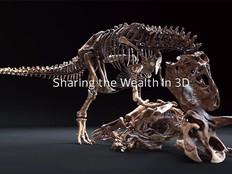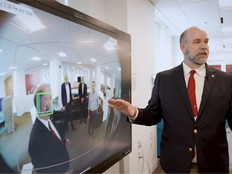Digital Workspace
Library of Congress Uses Modern Tech to Digitize American History
Alexander Hamilton’s papers. Abraham Lincoln’s letters. Rosa Parks’s message to her mother on the day of her famous arrest after refusing to give up her seat on a Montgomery bus. These are just a few of the treasured historical artifacts being digitally preserved by the Library of Congress. The library uses advanced scanning technology to capture documents and objects in stunning detail. The library’s technology has evolved over time and so has the amount of data it stores. Today, the Library of Congress stores 50 petabytes of data in the cloud and on-premises, ensuring that history can be preserved and presented to future generations of Americans.
If you enjoyed this video, check out the other videos in our Feds in the Field series:
- NASA Astronauts Leverage 3D Printing Aboard the International Space Station
- USDA Drones Search Irrigation Water for Contamination
- The VA Provides Health Care Via Smartphones
- Robotic Process Automation Does the Work at the Defense Logistics Agency
- Smart Building Technology Saves the State Department Time and Money
- Safe at Home: How 3 Agencies Made the Pivot to Remote Work
- Army Ramps Up Augmented Reality Training with COTS-Inspired Gear
- National Park Service Relies on Webcams to Attract Far-Flung Nature Fans
- Census Bureau Relied on Tech to Make the 2020 Count Happen
- Drones Aid NOAA Scientists with Hurricane Tracking and Animal Monitoring
- Oak Ridge National Laboratory Prepares for Its Exascale Supercomputer
- NIST Aims a Camera at the Mechanics of Fire
Participants
- Thomas Rieger, Manager, Digitization Services, Library of Congress
- Kate Zwaard, Director of Digital Strategy, Library of Congress
- Timothy Stutz, Digital Conversion Specialist, Library of Congress
- Domenic Sergi, Head, Digital Scan Center, Library of Congress
- Taren Ouellette, Digital Conversion Specialist, Library of Congress
- Diane Schug-O’Neill, Digital Conversion Coordinator, Library of Congress
Video Highlights
- The Library of Congress digitizes historical artifacts to expose more Americans, and people around the world, to the treasures it holds in its archives.
- Over time, the library’s scanning tools have evolved to handle larger images and capture objects more quickly.
- Digitizing important documents and photos from the past allows them to be preserved so that history can be brought to life.






